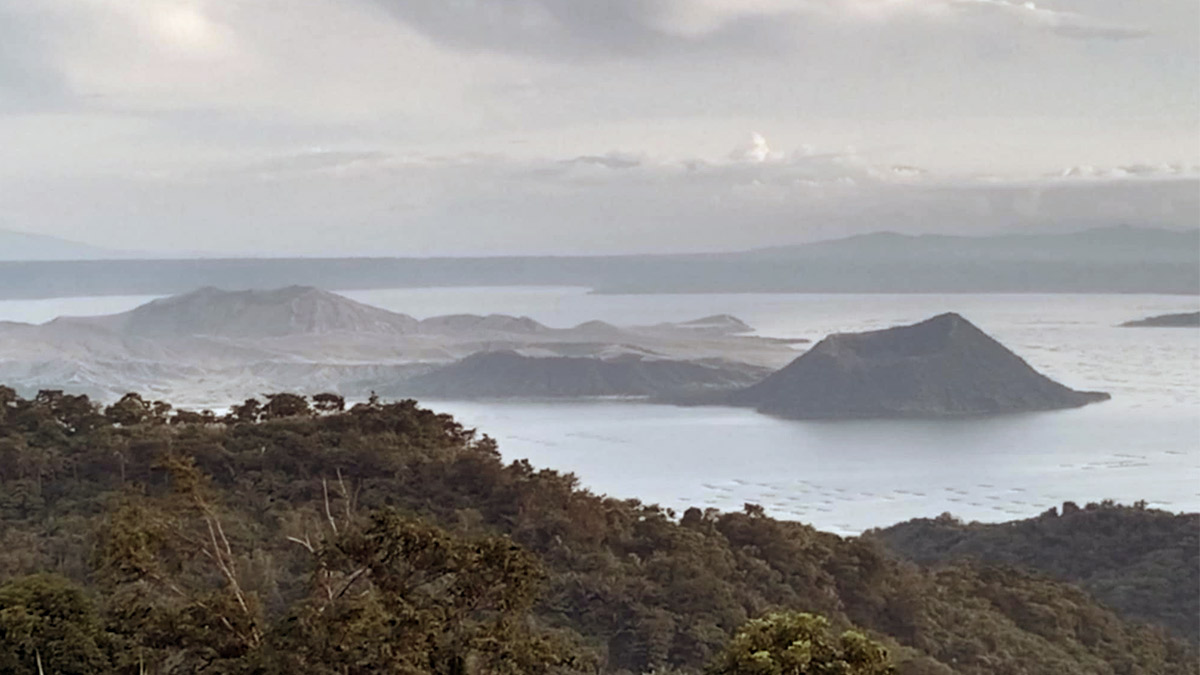
DECEPTIVELY CALM The Taal Volcano Island, locally known as “Pulo,” is deceptively calm in this photo taken on Oct. 2 from a viewpoint in Tagaytay City amid its ongoing unrest, which has prompted state volcanologists to warn officials of towns and cities around Taal Lake to prepare for possible escalation of its alert level from 1 to 2. —SHERWIN TAN
LUCENA CITY—Taal Volcano in Batangas province had another minor phreatic eruption on Sunday, Oct. 6, amid ongoing unrest since last week, the Philippine Institute of Volcanology and Seismology (Phivolcs) said.
In its Monday morning bulletin, Phivolcs reported that the steam-driven eruption, locally called “pusngat,” only lasted a minute.
However, Phivolcs also reported that on Oct. 5 the volcano had six minor phreatic eruptions lasting from one to three minutes; a four-minute minor phreatomagmatic eruption; and nine volcanic earthquakes, including two tremors that lasted six minutes.
On Oct. 2, the volcano had another phreatomagmatic eruption that lasted 11 minutes.
According to Phivolcs, the phreatomagmatic event was “likely driven by sudden contact of water with a small branch of shallow magma that has been in place beneath the Taal main crater and that has been degassing sustained levels of SO2 (sulfur dioxide) for the past three years.”
Phivolcs defined phreatic eruption as a “steam-driven explosion that occurs when water beneath the ground or on the surface is heated by magma, lava, hot rocks, or new volcanic deposits (for example, tephra and pyroclastic-flow deposits).”
The agency said the unrest is unlikely to progress into a magmatic eruption based on the background levels of volcanic earthquake activity and the detected ground deformation.
In an interview on Teleradyo Serbisyo on Monday, Phivolcs Director Theodore Bacolcol said a volcanic earthquake is one of the indicators to assess if a magmatic eruption is likely to occur soon.
“For the past 24 hours, we haven’t recorded a single volcanic earthquake. We also haven’t observed any swelling around the volcano,” he said in Filipino.
“If there is a continuous supply of magma, the volcano swells, and we call this inflation. We’re not seeing that now. In fact, what we’re seeing is the opposite, there’s been long-term deflation,” he added.
Phivolcs further explained that there has recently been a decrease in the number of volcanic earthquakes at Taal Volcano as compared to the 2020 eruption.
“For now, we have not observed a continuous increase in the number of earthquakes, like what we saw before the 2020 eruption. Back then, we recorded 123 earthquakes in one day, which was the highest we recorded before the January 2020 eruption,” he said in Filipino.
“In fact, at background levels, there are times when we have a few earthquakes, with five being recorded, and 10 already considered high,” he added.
Bacolcol also said the presence of magma is a normal occurrence, especially for an active volcano like Taal.
READ: Phivolcs logs minor phreatic eruption on Taal Volcano anew
As of Friday, 30 “minor eruptive events” have been recorded since Sept. 22, Phivolcs said. The eruptions have prompted state volcanologists to warn officials of towns and cities around Taal Lake to prepare for possible escalation of its alert level from 1 to 2.